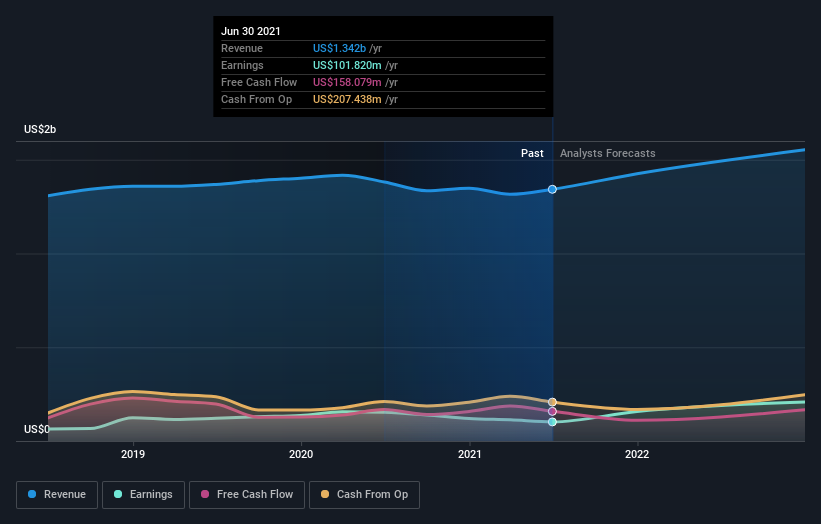Is There Now An Opportunity In MSA Safety Incorporated (NYSE:MSA)?
While MSA Safety Incorporated (NYSE:MSA) might not be the most widely known stock at the moment, it received a lot of attention from a substantial price movement on the NYSE over the last few months, increasing to US$166 at one point, and dropping to the lows of US$143. Some share price movements can give investors a better opportunity to enter into the stock, and potentially buy at a lower price. A question to answer is whether MSA Safety's current trading price of US$143 reflective of the actual value of the mid-cap? Or is it currently undervalued, providing us with the opportunity to buy? Let’s take a look at MSA Safety’s outlook and value based on the most recent financial data to see if there are any catalysts for a price change.
See our latest analysis for MSA Safety
What's the opportunity in MSA Safety?
According to my price multiple model, where I compare the company's price-to-earnings ratio to the industry average, the stock currently looks expensive. I’ve used the price-to-earnings ratio in this instance because there’s not enough visibility to forecast its cash flows. The stock’s ratio of 54.85x is currently well-above the industry average of 33.33x, meaning that it is trading at a more expensive price relative to its peers. In addition to this, it seems like MSA Safety’s share price is quite stable, which could mean two things: firstly, it may take the share price a while to fall back down to an attractive buying range, and secondly, there may be less chances to buy low in the future once it reaches that value. This is because the stock is less volatile than the wider market given its low beta.
What does the future of MSA Safety look like?
Investors looking for growth in their portfolio may want to consider the prospects of a company before buying its shares. Although value investors would argue that it’s the intrinsic value relative to the price that matter the most, a more compelling investment thesis would be high growth potential at a cheap price. With profit expected to grow by 80% over the next year, the near-term future seems bright for MSA Safety. It looks like higher cash flow is on the cards for the stock, which should feed into a higher share valuation.
What this means for you:
Are you a shareholder? MSA’s optimistic future growth appears to have been factored into the current share price, with shares trading above industry price multiples. At this current price, shareholders may be asking a different question – should I sell? If you believe MSA should trade below its current price, selling high and buying it back up again when its price falls towards the industry PE ratio can be profitable. But before you make this decision, take a look at whether its fundamentals have changed.
Are you a potential investor? If you’ve been keeping an eye on MSA for a while, now may not be the best time to enter into the stock. The price has surpassed its industry peers, which means it is likely that there is no more upside from mispricing. However, the positive outlook is encouraging for MSA, which means it’s worth diving deeper into other factors in order to take advantage of the next price drop.
In light of this, if you'd like to do more analysis on the company, it's vital to be informed of the risks involved. You'd be interested to know, that we found 3 warning signs for MSA Safety and you'll want to know about them.
If you are no longer interested in MSA Safety, you can use our free platform to see our list of over 50 other stocks with a high growth potential.
This article by Simply Wall St is general in nature. We provide commentary based on historical data and analyst forecasts only using an unbiased methodology and our articles are not intended to be financial advice. It does not constitute a recommendation to buy or sell any stock, and does not take account of your objectives, or your financial situation. We aim to bring you long-term focused analysis driven by fundamental data. Note that our analysis may not factor in the latest price-sensitive company announcements or qualitative material. Simply Wall St has no position in any stocks mentioned.
Have feedback on this article? Concerned about the content? Get in touch with us directly. Alternatively, email editorial-team (at) simplywallst.com.

 Yahoo Finance
Yahoo Finance 
